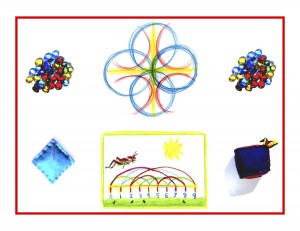Day 108
For one year, 365 days, this blog will address the Common Core Standards from the perspective of creating an alternate, ambient learning environment for math. Ambient is defined as “existing or present on all sides, an all-encompassing atmosphere.” And ambient music is defined as: “Quiet and relaxing with melodies that repeat many times.”
Why ambient? A math teaching style that’s whole and all encompassing, with themes that repeat many times through the years, is most likely to be effective and successful. Today’s standard will be listed in blue, followed by its ambient counterpart.
Number and Operations in Base Ten 1.NBT
Use place value understanding and properties of operations to add and subtract.
6. Subtract multiples of 10 in the range 10-90 from multiples of 10 in the range 10-90 (positive or zero differences), using concrete models or drawings and strategies based on place value, properties of operations, and/or the relationship between addition and subtraction; relate the strategy to a written method and explain the reasoning used.
Today’s standard is similar to yesterday’s, and it seems both are meant as preparation for working with the tens place in place value. The “concrete models or drawings” portion has resulted in students having to draw “hash marks and polka dots” to represent numbers and groups of numbers. This is cumbersome at best and deadening at worst. Math begs to be enlivened and made part of life. This is what engages students and enables math success.
Generally speaking, I find the Common Core language to be convoluted and unnecessarily obscure and difficult. The California State Math Standards by comparison, are clear and straightforward. I have retained these and the National Math Standards as references for the Math By Hand curriculum. Here are the California standards that are comparable to the Common Core Operations and Algebraic Thinking and Number and Operations in Base Ten.
Number Sense
1.0) Students understand and use numbers up to 100.
1.1) Count, read, and write whole numbers to 100.
1.2) Compare and order whole numbers to 100 by using the symbols for less than, equal to, or greater than (<, =, >).
1.3) Represent equivalent forms of the same number through the use of physical models, diagrams, and number expressions (to 20) (e.g., 8 may be represented as 4+4, 5+3, 2+2+2+2, 10-2, 11-3).
1.4) Count and group objects in ones and tens (e.g., 3 groups of 10 and 4 = 34, or 30+4).
1.5) Identify and know the value of coins and show different combinations of coins that equal the same value.
2.0) Students demonstrate the meaning of addition and subtraction and use these operations to solve problems.
2.1) Know the addition facts (sums to 20) and the corresponding subtraction facts and commit them to memory.
2.2) Use the inverse relationship between addition/subtraction to solve problems.
2.3) Identify 1 more than, 1 less than, 10 more than, 10 less than a given number.
2.4) Count by 2s, 5s, and 10s to 100.
2.5) Show the meaning of addition (putting together, increasing) and subtraction (taking away, comparing, finding the difference).
2.6) Solve addition and subtraction problems with one- and two-digit numbers.
2.7) Find the sum of 3 one-digit numbers.
3.0) Students use estimation strategies in computation and problem solving that involve numbers that use the ones, tens, and hundreds places.
3.1) Make reasonable estimates when comparing larger or smaller numbers.
Algebra and Functions
1.0) Students use number sentences with operational symbols and expressions to solve problems.
1.1) Write and solve number sentences from problem situations that express relationships involving addition and subtraction.
1.2) Understand the meaning of the symbols +,-,=.
1.3) Create problem situations that might lead to given number sentences involving addition and subtraction.
Aren’t these standards clearer and more straightforward? “If it ain’t broke, don’t fix it.” comes to mind here. There does seem to be a grass roots movement afoot to repeal/replace the Common Core with more workable standards. And this may very well happen in more states than not, in light of the fact that the Common Core may have been hastily conceived then rolled out without proper vetting and viability. The fact remains that math is a much-beleagered subject and sorely in need of a lively and sensible teaching approach. Waldorf and Math By Hand methods may be just the ticket!
As always, it’s the movement, story, and art that win the day with math! Knowledge ensues in an environment dedicated to imaginative, creative knowing, where student and teacher alike surrender to the ensuing of that knowledge as a worthy goal.












